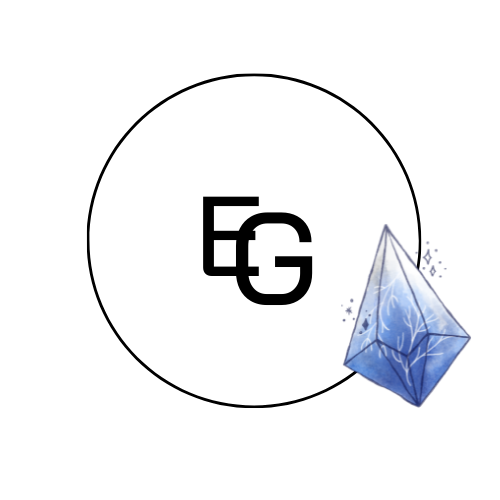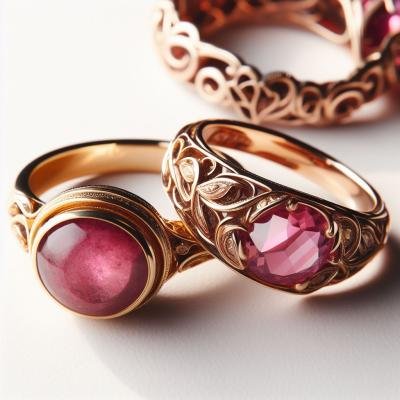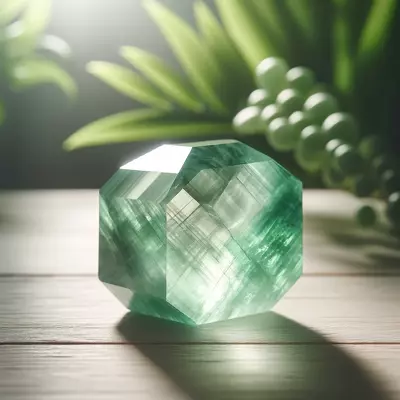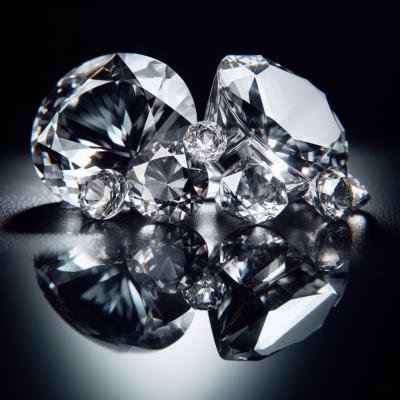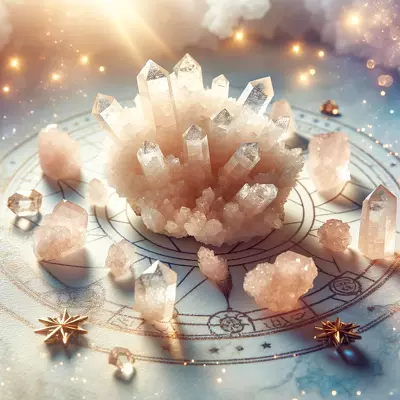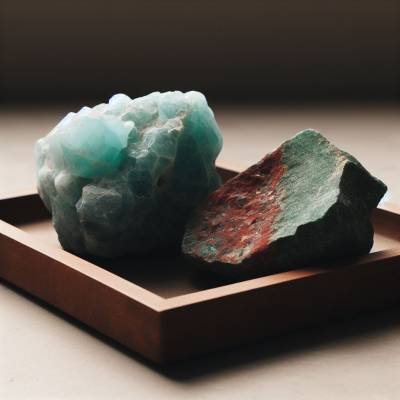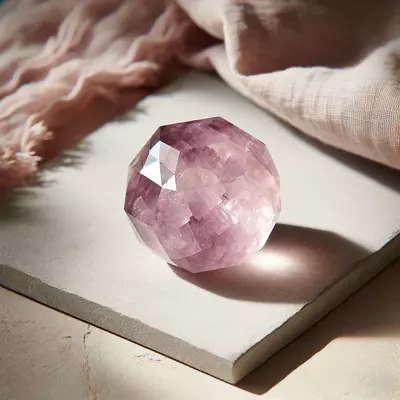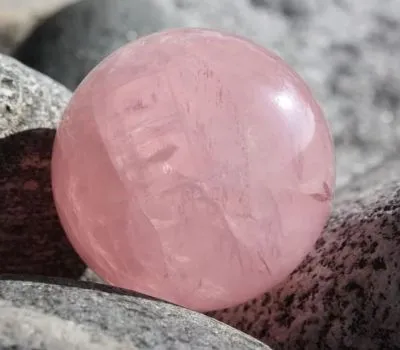From Spiritual Significance to Aesthetic Beauty: Unraveling Rhodonite vs Rhodochrosite
Rhodonite and rhodochrosite, both intriguing minerals, often captivate gem enthusiasts with their vivid hues and distinct properties. While they might share similarities in appearance, these two minerals have unique characteristics and histories that set them apart. Dive into their nuances, origins, and uses to appreciate the beauty and importance of each.
I. Introduction
Rhodonite and rhodochrosite, both alluring in their own right, hold a special place in the world of gems and minerals. Not only do they catch the eye with their radiant colors, but their origins and properties also offer a captivating tale.
A. Origins and basic properties
Rhodonite, derived from the Greek word “rhodon,” meaning “rose,” is a manganese inosilicate, often recognized for its striking pink and black appearance. This gem is commonly associated with love, compassion, and emotional healing. On the other hand, rhodochrosite, also rooted in Greek for “rose-colored,” is a manganese carbonate mineral. It gleams with bands of pink or rose intertwined with white or beige streaks, symbolizing selfless love and deep emotional connections.
B. Initial discovery and naming
While the precise details of their discoveries remain elusive, rhodonite and rhodochrosite have been revered for centuries. The allure of their colors inspired their names, with ancient civilizations attributing various legends and myths to them.
II. Distinguishing Features
Distinguishing between rhodonite and rhodochrosite can be an intriguing endeavor, even for the seasoned gem enthusiast. Their overlapping hues of pink and rose often lead to confusion, but several key features set them apart.
A. Color variations
Rhodonite’s color palette ranges from light pink to deep rose, frequently interrupted by black manganese oxide veins. Rhodochrosite, in contrast, offers a more consistent pink or rose shade, accentuated by alternating lighter bands or patches.
B. Physical properties: hardness, luster, and streak
In terms of hardness, rhodonite holds a slightly higher position on the Mohs scale, ranging from 5.5 to 6.5, while rhodochrosite lingers around 3.5 to 4. When it comes to luster, rhodonite boasts a vitreous to pearly sheen, whereas rhodochrosite presents a glassy to pearly appearance. The streak tests further differentiate them; rhodonite leaves a white streak, and rhodochrosite a pale rose.
C. Geographic locations and mining
While both gems can be found worldwide, rhodonite is notably mined in Australia, Russia, and the U.S., especially in Massachusetts and New Jersey. Rhodochrosite has notable deposits in Argentina, with the Sweet Home Mine in Colorado being a significant U.S. source.
III. The Enchanting Resonance: Spiritual Meaning and Healing Properties
Beyond their aesthetic allure, both rhodonite and rhodochrosite are believed to possess profound spiritual and healing properties that resonate deeply with many.
A. Spiritual significance of rhodonite
Rhodonite, often dubbed the “rescue stone,” is believed to heal emotional scars, promoting self-love and forgiveness. It’s also associated with grounding energies, helping one remain centered in challenging times.
B. Healing benefits of rhodochrosite
Rhodochrosite, on the other hand, is known as the “Stone of the Compassionate Heart.” It’s thought to stimulate love and passion while fostering deep emotional healing. Many believe it can help bridge the gap between the conscious and subconscious, unveiling hidden traumas.
C. The interplay between energy and minerals
The world of crystals and minerals often intertwines with the realm of energy and spirituality. While scientific evidence is limited, many attest to the vibrational frequencies of these gems, asserting that they can influence our aura and energy fields.
IV. Glamour and Practicality: Incorporating the Gems in Daily Life
Merging the spiritual with the aesthetic, rhodonite, and rhodochrosite can be seamlessly integrated into daily life, whether as jewelry or home decor.
A. Tips for wearing rhodonite and rhodochrosite jewelry
Both gems, with their heartwarming hues, make for stunning jewelry pieces. While rhodonite’s toughness makes it suitable for rings and bracelets, rhodochrosite, being softer, is better suited for pendants or earrings. It’s crucial to handle rhodochrosite with care to avoid scratching.
B. Decorative uses in home interiors
With their radiant colors, both stones can be used as decorative pieces or inlays in home interiors. Imagine a rhodonite centerpiece on a coffee table or rhodochrosite accents on wall art – the possibilities are endless.
C. Maintenance and care recommendations
Given their varied hardness levels, care routines differ. Rhodonite, being harder, can withstand occasional gentle scrubbing. However, rhodochrosite requires a softer touch. Both should be kept away from harsh chemicals, and it’s recommended to store them separately to prevent scratches.
V. FAQs
Q: Is Rhodochrosite the same as Rhodonite?
A: No, while they both share similar pink hues, they are distinct minerals with different chemical compositions and physical properties.
Q: What is the spiritual meaning of Rhodonite vs Rhodochrosite?
A: Rhodonite is often referred to as the “rescue stone,” symbolizing emotional healing, self-love, and grounding energies. Rhodochrosite, known as the “Stone of the Compassionate Heart,” represents deep emotional healing, love, and the bridging of conscious and subconscious realms.
Q: What is the difference between Rhodonite and rhodocrosite?
A: Rhodonite is a manganese inosilicate with black manganese oxide veins and a hardness of 5.5 to 6.5 on the Mohs scale. Rhodochrosite is a manganese carbonate mineral, recognized by its banded pink appearance and a hardness of 3.5 to 4.
Q: What is Rhodochrosite confused with?
A: Rhodochrosite is often confused with Rhodonite due to its similar pink hues. However, their distinct banding patterns and physical properties differentiate them.
Q: Are Rhodonite and Rhodochrosite used in jewelry the same way?
A: While both can be used in jewelry, Rhodonite’s greater hardness makes it suitable for rings and bracelets. In contrast, the softer Rhodochrosite is often preferred for pendants or earrings.
Q: Which gemstone is rarer, Rhodonite or Rhodochrosite?
A: Both are sought after, but Rhodochrosite, especially in its high-quality, banded form, is considered rarer and often commands higher prices.
Q: Can both Rhodonite and Rhodochrosite be used for home decor?
A: Yes, both can be incorporated into home interiors. Their vibrant colors make them appealing for decorative pieces, inlays, and even wall accents.
VI. Conclusion
A. The legacy and continued allure
Rhodonite and Rhodochrosite have, over centuries, carved their legacy in the annals of gemology. Their enchanting colors and intricate patterns have continually fascinated cultures worldwide, making them treasured possessions for many.
B. Their roles in modern gemology
In today’s gemological landscape, both minerals play vital roles. Beyond their aesthetic value, they’re studied for their unique properties, and their influence stretches from fashion to spiritual practices.
C. Embracing the beauty of both minerals
While they might be distinct in many aspects, embracing both Rhodonite and Rhodochrosite provides a comprehensive appreciation of their shared beauty and individual magnificence.
VII. Suggested Readings
Dive deeper into the captivating world of gemstones with these enlightening reads:
- “Gems of the World” by Cally Hall: An illustrated guide exploring the fascinating universe of gems and minerals.
- “The Crystal Bible” by Judy Hall: A comprehensive handbook detailing the properties and uses of crystals, minerals, and stones.
- “Gemstones: Symbols of Beauty and Power” by Eduard J. Gübelin & Franz-Zaver Erni: A visual journey through the mesmerizing world of gemstones, showcasing their significance across cultures.
- “Healing Crystals: The A-Z Guide to 555 Gemstones” by Michael Gienger: A detailed exploration of the healing properties associated with various gemstones.
- “Gem: The Definitive Visual Guide” by DK: A visual treat celebrating the beauty, form, and function of more than 300 gemstones.
Whether you’re an enthusiast, a spiritual seeker, or someone captivated by the allure of gems, these books offer a treasure trove of knowledge and insights.
